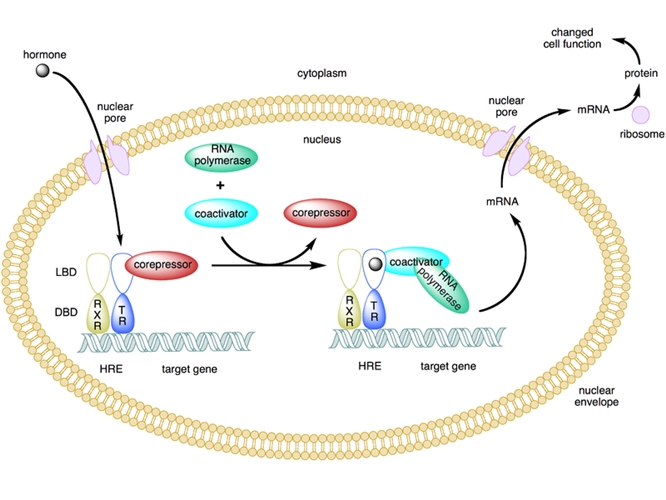This is the first time I have noticed a suggestion in a paper that there could be a fundamental difference between producing adequate thyroid hormone in your own thyroid and taking it as a tablet. On that basis alone it is interesting. And it does not need there to be any difference in the chemical substance.
The underlined sentence is what I see as the bit that is highly relevant to the group.
The paper is very speculative.
BioMed Research International
Volume 2013 (2013), Article ID 503419, 5 pages
dx.doi.org/10.1155/2013/503419
Clinical Study
Endometrial Polyps in Women Affected by Levothyroxine-Treated Hypothyroidism—Histological Features, Immunohistochemical Findings, and Possible Explanation of Etiopathogenic Mechanism: A Pilot Study
Carlo Saccardi,1 Salvatore Gizzo,1 Kathrin Ludwig,2 Maria Guido,2 Mara Scarton,1 Michele Gangemi,1 Raffaele Tinelli,1,3 and Pietro Salvatore Litta1
1Department of Women’s and Children’s Health, University of Padua, 35128 Padua, Italy
2Department of Medical Diagnostic and Special Therapy, University of Padua, 35128 Padua, Italy
3Ospedale San Bassiano, OB/GYN Unit, 36061 Bassano del Grappa, Vicenza, Italy
Received 29 April 2013; Accepted 19 July 2013
Academic Editor: Kyousuke Takeuchi
Copyright © 2013 Carlo Saccardi et al. This is an open access article distributed under the Creative Commons Attribution License, which permits unrestricted use, distribution, and reproduction in any medium, provided the original work is properly cited.
Abstract
The aim of the study was to investigate the possible overexpression of estrogen (ERs) and progesterone (PRs) receptors both in EPs glandular and stromal cells in postmenopausal women with levothyroxine-treated hypothyroidism in comparison to EPs detected in women with physiological thyroid hormone levels. During the study period (January-February 2013) 22 patients were eligible (12 treated, 10 controls). The two groups were homogenous for general, EPs sonographic and hysteroscopic features. None of the cases of atypia was found. Immunohistochemistry showed that the two groups were similar for ERs and PRs intensity rates in EPs glandular cells despite a trend of ERs percentage expression more than 60% in 2/3 of treated patients versus 1/3 of controls. In stromal EPs components, ERs intensity was high positive in 10 (83,3%) treated cases while it was high positive in 1 control (10%). Percentage of ERs stromal expression showed a different trend between the two groups despite a borderline statistical significance. Our hypothesis is based on a possible double action of hypothyroidism and thyroxine intake: the subclinical TSH increased levels and its possible circadian oscillation could stimulate the endometrial TSHRs (increasing type 2 DIO activity); the circulating levels of exogenous thyroxine could be locally metabolized in active form by type 2 DIO stimulating ERs.
hindawi.com/journals/bmri/2...
Full paper available at link above.
Rod
